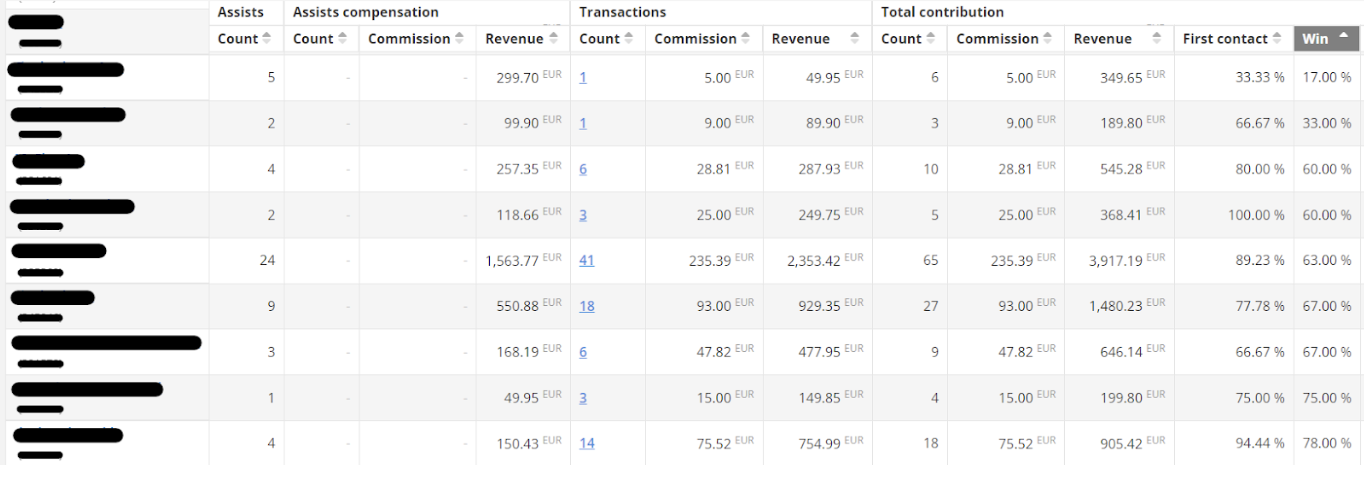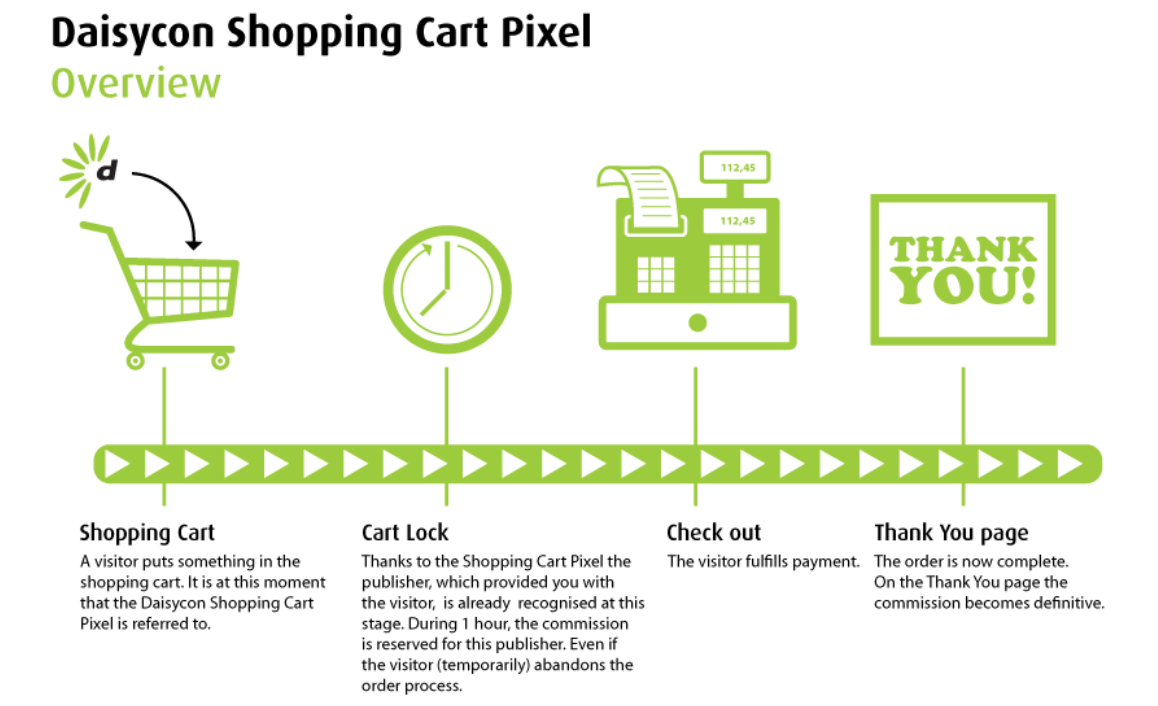Understanding affiliate conversion attribution for online success
Date of publication:
This article is aimed at any advertiser trying to understand and improve the conversion attribution on its affiliate campaign. We will start by explaining what are the most used conversion attribution models. We will finish with some tools that will help you to master the management of your conversion attribution.
1- Definitions
Conversion attribution: Conversion attribution is the process of determining which marketing channels or touch points contributed to a desired action or conversion. For example a purchase, sign-up, or download
Touch points: Marketing touch points are any points of interaction or contact between a brand and its target audience throughout the customer journey. In affiliate marketing we usually measure the touch points as clicks generated by affiliates.
2- The most used conversion attribution model in affiliate marketing
The last click count attribution model is used in affiliate marketing. It attributes 100% of the credit for a conversion to the last affiliate link clicked by the customer.
This occurs before making a purchase or completing the desired action.
The benefits of the last click count attribution model:
– It is easy to technically set-up.
– It allows affiliates to better forecast their earnings and therefore invest more in the promotion of the campaign.
– It permits gathering enough data about touch points to further optimise the conversion attribution.
The drawback of the last click count attribution model:
– When the conversion is not optimised, it will mostly reward lower funnel affiliates.
3- Other attribution models
Next to the last click, there are plenty of other attribution models that can be used like the first click or linear model. For example, in the graphic here below we explain you how they work.
 All those attribution models have drawbacks and benefits. The decision on which one is the best to use should be based on a deep understanding of each touch point on an already running affiliate campaign.
All those attribution models have drawbacks and benefits. The decision on which one is the best to use should be based on a deep understanding of each touch point on an already running affiliate campaign.
Custom attribution models
Some platforms or measuring/attribution software will recommend using their own ‘house-built’ attribution model. However, due to the lack of transparency in their workings and the often challenging optimisation of campaign attribution, we do not recommend their use. It can also scare potential affiliates to promote your campaign.
4- Tools to master the affiliate conversion
At Daisycon we offer you tools to master the management of the attribution on your affiliate campaign. We also make sure all your affiliates are rewarded fairly for the efforts they put in promoting your campaign while keeping the ROAS (Return On Advertising Spend) of your affiliate channel under control:
The conversion assist overview
The conversion assist overview gives you a global overview of all the touch points on your channel. Using it will permit you to see what is the contribution of each touch point on your campaign.
For example, sortering your touch points by the ‘Win’ percentage enables you to easily see which affiliate media do contribute a lot to your campaign. This happens even without always receiving a commission for it:

You can then decide to reward those publishers by for example raising the commission they will receive when a commission is attributed to them. By giving them an extra CPC commission or allowing them to use a dedicated promotion code that will attribute all transactions made with their promotion code to them even when another affiliate media is involved further down.
Read more about the conversion assist overview in this article.
The shopping cart pixel
One of the largest drawbacks of the last click count attribution model is that conversions are often attributed to promotion code publishers. This occurs when a consumer is looking for a discount at the last moment of his purchasing journey.
To keep this under control we give our advertiser the possibility to use the shopping cart pixel. This feature offers the advertiser the possibility to assign a (possible) transaction to a publisher, for the length of an agreed time. As soon as the visitor places a product in the on-line shopping cart. Even if the visitor (temporarily) leaves the website, the revenue won’t be rewarded to other publishers upon order fulfillment.

Read more about the shopping cart pixel.
Want to know more? Contact us now!
